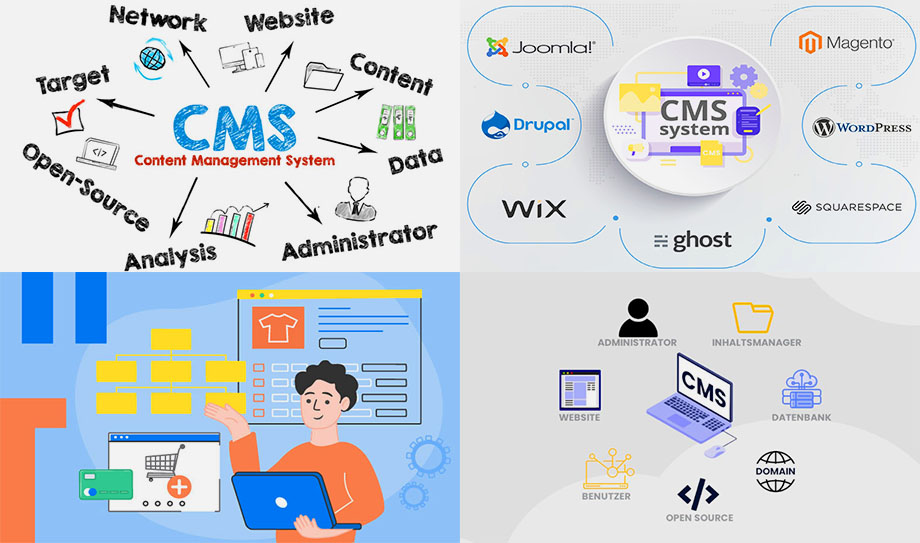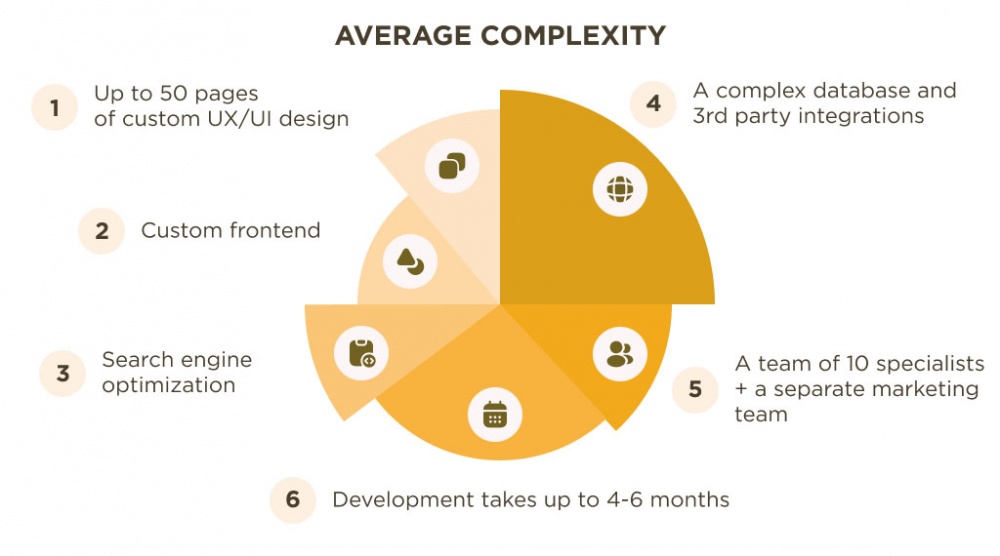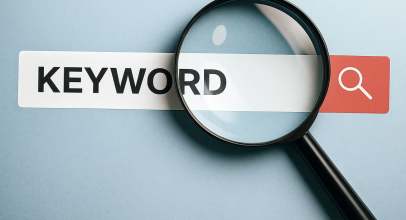- Essentials of E-commerce Platform Development
- Builder, CMS, and Custom Development – Key Methods for Creating an Online Store
- Developing an E-commerce Platform using CMS
- Turnkey Development of an Online Store
- What Elements Should an Online Store Include: Structure and Functionality
- The Cost of an Internet Store Based on CMS
- Design of an Online Store: How the Price Is Formed
- Layout of an Online Store: How the Price Is Formed
Currently, having an online presence has become essential for all types of businesses. Therefore, the question of how much it costs to create an online store concerns every entrepreneur who understands the importance of online development prospects. Price differences in the web development market can be substantial. In this material, we will examine the key aspects of cost formation to help better plan the project and invest funds wisely.
Essentials of E-commerce Platform Development
Crafting an electronic commerce platform is a complex undertaking, demanding specialized technical knowledge along with a substantial investment of time and effort. It's not just about knowing how to aesthetically design pages and product cards. It involves a meticulous consideration of the platform's structure, functionality, and navigation, ensuring users can swiftly and easily locate what they need.
Furthermore, a good understanding is required in:
- Web development, UI/UX design
- Server configuration
- Database integration
- Guiding users towards accomplishing specific actions on the site
In practice, only a team of professionals can create a high-quality eCommerce resource.
So, how much does an online store cost?
It depends on various factors, primarily the structure and complexity of the resource. A portal with limited options will be more budget-friendly, while a platform with extensive functionality and stylish design will come at a higher cost.
Builder, CMS, and Custom Development – Key Methods for Creating an Online Store
How are platforms for electronic commerce created? There are several methods:
-
Using ready-made templates (builder): Developing a website with a builder like Wix or Shopify is the most budget-friendly method to create a web store. In this approach, a platform that best suits the client's needs and provides the required features is chosen. Based on templates, the design is customized, and necessary information and product cards are added. As a result, the customer receives a straightforward website with basic capabilities.
This option is suitable for small businesses with a limited range of products.
However, if there is a need to expand operations, creating a new website may be necessary, especially if the builder does not allow deep customization of templates. -
CMS (Content Management System)
-
CMS involves using a predefined platform (a ready-made framework) to build a website. The resource can be customized to some extent and updated without a deep understanding of technical intricacies. It is a balance between flexibility and ease of use.
-
From Scratch – Custom development tailored to the client's requirements. This approach demands time and investment, but the results of professional development are usually worth it.
Creating a website using templates might be the most cost-effective method initially, but for medium and large businesses, template-based sites may not be suitable due to numerous functional and design limitations.
Therefore, it's crucial to consider not only the current cost of the e-commerce website but also its potential for future development, including customization and scalability.

Now, one of the intriguing online stores keeping up with the latest trends is an innovative project in the field of robotics - https://robotxworld.com/.
Developing an E-commerce Platform using CMS
Creating an online store with popular CMS platforms such as CS-Cart, OpenCart, or Magento provides more freedom and flexibility. These systems can be off-the-shelf solutions or function as SaaS services. The market offers a variety of free and premium options, leading to different costs:
-
Free CMS provides a limited set of features and often lacks technical support. Nevertheless, expenses are still incurred for hosting, domain name registration, and configuring the online platform to suit business needs.
-
Paid CMS offers maximum capabilities for building a modern platform, easily integrating required payment systems and other services.
When choosing a platform, it's essential to consider CMS options that are convenient for building a small website.
Some options allow functionality expansion in the future, making CMS a common recommendation for small businesses.
Turnkey Development of an Online Store
When the capabilities of builders and CMS fall short, businesses opt to create a completely unique solution. The cost of developing an online store from scratch is higher than using ready-made platforms. However, custom development allows for:
- Utilizing and integrating any necessary programs and services.
- Crafting a distinctive design that sets the brand apart from competitors.
- Simplifying navigation for customers to quickly find products.
- Creating the desired number of sections, blocks, language versions.
- Implementing unique functionality or services that differentiate the store from competitors.
To successfully tackle this task, preliminary market research is necessary. This research reveals business needs, the characteristics of the target audience, their requirements and expectations, as well as the strengths and weaknesses of competitors.
A turnkey website requires special skills, knowledge, and time. Therefore, it is more strongly recommended for large-scale online stores with a wide range of products, as well as for companies planning to expand and enter new markets.
What Elements Should an Online Store Include: Structure and Functionality
For an e-commerce platform to be successful, it must meet several requirements:
- Have a stylish and attractive interface.
- Elicit a desire to purchase products.
- Operate quickly and stably.
- Withstand high traffic.
- Allow easy product discovery.
- Present products informatively and effectively.
A high-quality e-commerce website requires robust technical support. When designing pages, the brand's style should be considered, with special attention given to unique, useful, and interesting content.

Structure
It's important to note that an online store has a complex infrastructure, so special attention should be given to creating a technical specification and prototype. The website should consist of the following sections:
- Home page
- Brand information
- User account
- Catalog
- Special offers, promotions
- Clearance
- New arrivals
- Popular products
- Delivery information
- Payment page
- Shopping cart
- Blog
Products in the catalog should be categorized into groups and subgroups for easy navigation. All these factors impact the cost of creating an online store.
Functionality
The cost of the portal also depends on its functionality, which aims to ensure the proper functioning of the online store. It should include the following options:
- Search – simple and user-friendly.
- Filters to sort products.
- Shopping cart, order checkout, and payment system selection.
- Chatbots and other forms of feedback.
- Order tracking capabilities, among others.
The quantity and complexity of the functionality directly affect the cost of an e-commerce website. The more complex the resource, the more investment is required for development.
The Cost of an Internet Store Based on CMS
There are numerous CMS platforms offering both free and paid plans. In the former case, you may have to limit yourself to the provided functionality, while in the latter, there's the possibility of utilizing more advanced options and integrating third-party systems and software.
The cost of creating an online store depends on the following factors:
- Working on the interface.
- Configuring various options – purchases, delivery, filters, and others.
- Integrating third-party services.
- Hosting costs.
Additionally, it's advisable to plan for scalability from the outset. In such a case, the cost will be even higher.
Design of an Online Store: How the Price Is Formed
The cost of the interface is influenced by various factors:
-
Complexity: The least expensive option is using a pre-made template. There's also the possibility of not only utilizing templates but also customizing them to fit the business needs and audience preferences, which is more expensive than standard template work. A unique design created from scratch provides an opportunity to make the brand recognizable and stand out among competitors. However, this option requires more time and effort from developers, making it three times more expensive than template design.
-
Number of pages: If an online store has numerous pages, it will impact the design cost, as layouts need to be developed to maintain a consistent style throughout the site.
-
Adaptation of design to various devices, ensuring the site looks equally appealing on computers, smartphones, and tablets.
-
Use of graphic elements and multimedia effects, which can affect the cost of design.
-
User-friendliness: For a successful site, it should be intuitively understandable, and the customer should be able to achieve their goal in 2-3 actions.
On average, the work of a designer costs between $2,500 and $10,000, depending on their level of professionalism. Specialists with an impressive portfolio may charge higher fees.

Layout of an Online Store: How the Price Is Formed
The cost of e-commerce platform layout is influenced by the following factors:
-
Complexity of the layout: The more intricate the interface, the more time and effort are required for the layout. Complexity may involve animations, special effects, headers, highlighting specific elements, and more.
-
Number of pages: The more pages, the higher the cost of the layout, as each page needs to be individually crafted.
-
Functional elements: The cost is influenced by working with order forms, search filters, interactive shopping carts, and other functional elements.
-
Responsiveness: During layout, it is essential to ensure that the site is user-friendly on various devices.
Each case is unique, so to determine the cost of layout for your online store, please consult with our specialist.
The Cost of a Programmer Developing an Online Store
The cost of a programmer's work starts at $35-40 per hour. They earn a high salary for a reason. To create high-quality websites, developers must keep up with innovations, explore and learn new tools. Additionally, implementing innovative technologies becomes increasingly challenging, requiring new skills and time. For comparison: just a few years ago, creating a custom online store required about 500 labor hours, whereas today, it takes at least 800 hours.











